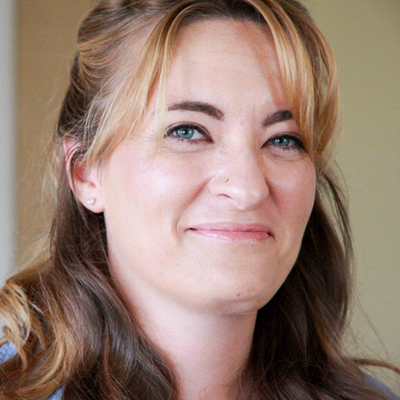How studying galaxy evolution can provide phenomenal insights
The Universe is a highly dynamic place - as it ages the existing galaxies also age, while new galaxies begin to form. Galaxies used to be smaller in the distant past, forming stars at a higher rate, containing more gas than they have today. Additionally, the so-called supermassive black holes at the centers of galaxies once shined brighter than they do now - they used to accrete more material and be more active. There are also many more 'quiescent' or 'dead' galaxies today - galaxies that have stopped forming stars altogether, and we don't know why. Questions of why these changes have happened point to the bigger question of how they affect humanity here on Earth; what about our very own Milky Way, that harbors our planet? Dr. Alison Coil, at the University of California, San Diego, asks the big questions such as "How are galaxies changing as the Universe expands, and How are galaxies and the stars and black holes in them influencing each other as time goes by?" As she aims to understand different aspects of galaxy evolution, so that we may better understand our place in the Universe on a much larger scale.
Since the beginning of time, stars have played an important role in our lives. To some, they were a compass; to others, they were a metaphor. To most, they've been a mystery - frontiers unbroken with limitless possibilities, an inspiration that makes us wonder: "Why are we here, and How did we get here? Who am I, and What part do I play in the bigger scheme of things?" Furthermore, the stars are not as we see them, and there is much more to the picture, more than our eyes can see. In our 21st century space exploration age, when we understand that we don't just go to space but that we are already in space, stars cease to be mere triggers of curiosity for the unknown. They begin to stir a sense of connection underlying every human soul that is not only searching for what's out there, but what's already around and inside of us. By investigating the Universe on immensely vast scales, so large that our brains cannot comprehend them, Dr. Coil explores possibilities in creative perspectives and innovative approaches in order to study galaxies near and far. Understanding how galaxies and the stars and black holes in them are interconnected and influence each other will help us understand how we, inhabitants of Earth, got here and where we are going. The enormity of the scales that Dr. Coil studies goes far beyond an individual galaxy, and as the field is moving quickly, a breakthrough in this area can result in an incredible amount of knowledge across a range of different fields today. Dr. Coil's research thus has the potential to produce and develop something new every five years, and foreruns the venture of increasing our awareness of the world we live in. Tackling these questions allows us to understand how we got here, and it provides us an incredibly unique outlook on our lives on Earth.
In order to understand the galaxy population as a whole, Dr. Coil, along with her team of graduate students and a postdoctoral researcher, perform statistical studies using large galaxy surveys. Instead of studying individual galaxies in great detail, Dr. Coil and her group reveal what the full galaxy population is doing and why, so that they can then look closer at different kinds of galaxies and know how they fit into the larger picture. Dr. Coil also studies galaxies from a cosmological perspective, to trace how they fit into the larger cosmic web - the large-scale structure of the Universe - and how they interact with the dark matter halos in which they are embedded. She brings the same general principle back to her lab, where everyone on her team works on different projects, so that each person is leading his or her own research with the goal of ultimately fitting each piece together into a bigger picture. Dr. Coil also works with a variety of collaborators at other institutions for the different projects she works on. This allows them to pool resources such as telescope time as well as scientific skills and knowledge, and they find that working together they are more than the sum of their parts.
Dr. Alison Coil's current projects include:
-
How are galaxies influenced by the dark matter halos that they live in? We don't see most of the matter that exists in the Universe, as most of it is in the form of dark matter. It's not matter that we are familiar with, like protons, neutrons, or electrons; we don't actually know what dark matter is. A region of space where there is enough dark matter that it collapses under its own gravitational pull forms what is called a dark matter halo, and at the centers of those halos is where you can find galaxies, surrounded by dark matter. One can use galaxies as beacons to trace where the underlying dark matter is. Another approach, taken by Dr. Coil, is to investigate how the unseen dark matter itself around the galaxy influences how the galaxy changes with time.
- What role do outflowing galactic winds play in galaxy evolution? Many galaxies have galactic-scale winds where enormous amounts of gas and dust are being ejected out of the galaxy, into their surrounding dark matter halos and into the space between galaxies. This has major implications for the rate at which those galaxies can grow and continue to form stars, and Dr. Coil is trying to understand which galaxies have winds and how those winds impact the galaxies' further evolution. Galactic winds are a relatively new area of study, as researchers just recently discovered that most galaxies are removing a lot of the material they would use to grow the galaxy, as if to enforce a system of self-regulation. It is still unknown exactly which galaxies have these winds, how the winds are created, and what their impact is on galaxies. It's an emerging field that can potentially induce a myriad of previously-unforeseen discoveries. Galaxies are not growing at the rate that they should be because they are ejecting their basic material in these winds, and every few years Dr. Coil and her team see a breakthrough in terms of questions such as "Which galaxies have galactic winds or which galaxies have accreting supermassive black holes." Understanding what this means in terms of galaxy evolution in general requires several more years, in order to compile all of their data and in particular to compare with theoretical research, to fully understand the physical implications.
-
How do galaxies and the supermassive black holes that are in them co-evolve, and how do they influence each other? While dark matter exists throughout all of space, supermassive black holes are very energetic, dynamic smaller scale objects that exist only at the centers of galaxies and nowhere else in the Universe. These supermassive black holes likely influence the galaxies they are found in. Dr. Coil aims to understand both which galaxies have them and further how their presence affects the galaxies they reside in, so that we may better understand how matter on different scales can influence each other.
Bio
Dr. Alison Coil became interested in astronomy in high school while living in Central Oregon, when she attended two public lectures. One was given by Stephen Hawking, who was on a tour to promote his book on black holes and baby universes. She didn't understand too much of what he said at the time, but she wanted to learn more. The other talk was by Paul Davies, who was also on a book tour, and he spoke about the expansion of the Universe and whether it would eventually collapse back (and if so, if time would run backwards!). Dr. Coil understood more of his lecture, and the scale of what he was talking about was amazing to her - she had never heard anything so cool in her life. (We now know that the Universe likely won't collapse back; it's amazing to realize what we've learned since then.) In order to really understand what he was saying, Dr. Coil knew that she would need to learn more math and physics, which she excelled at in high school, so she decided to major in astronomy and astrophysics in college. As an undergraduate, Dr. Coil discovered that while classes were interesting, what she really enjoyed doing was original research. She liked playing with data that no one else had, seeing things that no one else had seen, and mostly she enjoyed trying to figure out what was going on - what the story was that explained what she was seeing. So she decided to continue astrophysics research in graduate school. She also enjoyed how collaborative and interactive astronomy was - she was interested in other subjects in school (architecture, photography, philosophy), but those careers were more solitary. Cutting-edge research was dynamic and interactive - everyone brought their data and pieces of the puzzle together and shared information and results, and the field came together to make progress on these big questions.
Dr. Coil is not only a researcher but also a mentor to many; she created and runs a group called Women in Physics for graduate student women in the Physics department at UCSD. There are few women faculty members in the Physics department, such that Dr. Coil has been building deep relationships with graduate as well as undergraduate students. She mentors women in the department both formally and informally; once a month the Women in Physics group meets to discuss various issues surrounding gender and careers, while outside of these meetings students can enjoy direct access to her insights and time. Many women in the department by the time they graduate testify that being able to talk to Dr. Coil about these issues helps them succeed in a male-dominated field.
Outside of her research, Dr. Coil absolutely loves reading and is always reading at least five books at the same time. She reads both fiction and nonfiction and chooses which of the five books to open at any given time depending on her mood. She is also a true San Diegan who enjoys yoga and dog beach.
In the News
UCSD Division of Physical Sciences


